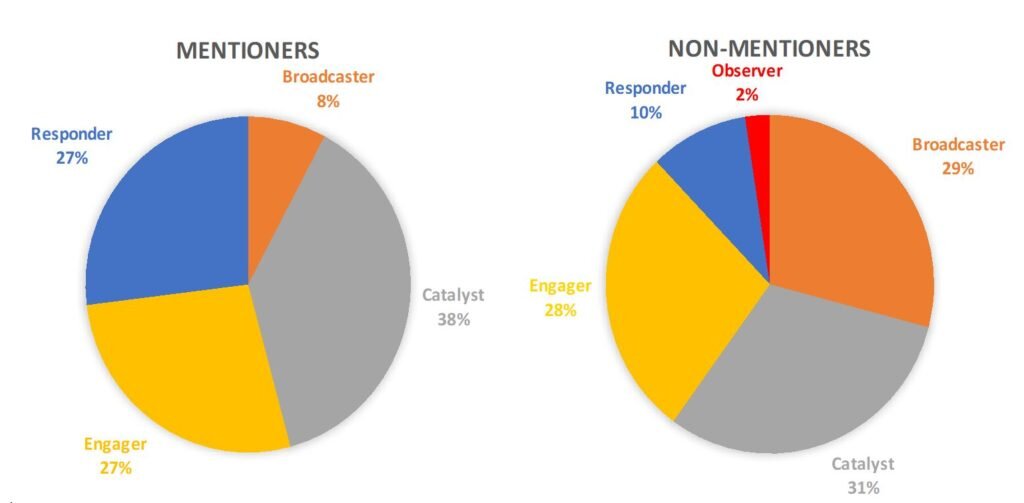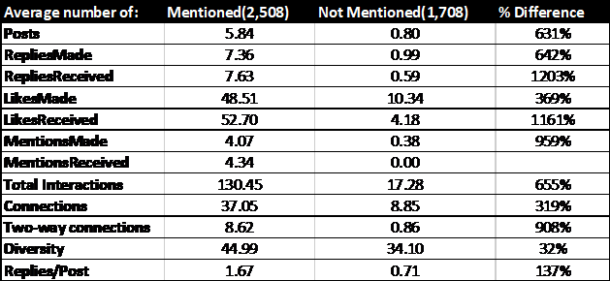Now that You @Mention It…
Can you remember the first time you were mentioned in a school newsletter, community bulletin or perhaps even the local newspaper? I can recall, more decades ago than I care to admit, I was in the local soccer club news. It was my very first game of soccer as a young child and it went something like: “Laurence Lock Lee was like a terrier on the field, chasing the ball all over the park...”. And even the closing sentence: “…but unfortunately, like the rest of the team, with no particular direction in mind”, couldn’t put a dampener on it, as my proud parents read it out, and I couldn’t wait for the next game to come around.
Being ‘mentioned’ publicly has long been considered a most worthy form of praise. In war times being “Mentioned in Despatches” was a common form of recognising exceptional performance or behaviour and the term has since migrated into mainstream business. With the advent of Social Media/Networking and the @ mention popularised by Twitter, we have seen the ‘mention’ evolve to more than an instrument of praise, but also one for tagging people into an online conversation. While perhaps not as gratifying, it does send a signal from the ‘tagger’ that I am thinking of you, and vice versa.
It was of little surprise therefore when SWOOP co-founder and CEO @CaiKjaer posted recently in our SWOOP user community recommending the more extensive use of @mentions, and then doing some tagging himself:
“I always recommend using @ mention to draw people into a conversation. In this short video from Scott Ward, he does a great job of explaining the why and how”.
Cai’s post was quickly responded to by fellow SWOOPer @jamestyer:
“@caikjaer - re your post in the SWOOP customer group, do we have any stats about reply rate when there is an @mention as opposed to none?”.
James was clearly seeing how the expressed opinion could be strengthened by some real evidence. After all, isn’t that what SWOOP is for?
Well, sadly the extent of our @ mention analysis was limited to simply counting them. But encouraged by @jamestyer, this article looks to correct this omission. Directly to the question of whether posts with @ mentions attract more replies than those that don’t, the answer is an unequivocal yes.
@Mention Analysis
We took data from five large to medium-sized organisations from our benchmarking data base, using Yammer and Workplace data, and crunched the numbers. Here are the results:
You get 73% more replies when you @ mention someone. For one organisation it was a whopping 159% more replies!
On average 12% of posts include a mention, so it seems that there is scope to improve.
Here are the details:
But wait, there’s more!
The Mention Giver and Receiver Analysis
We’ve talked about how motivating it can be to be mentioned, but what about the one doing the mentioning? In this ‘Giver and Receiver’ analysis we look to profile those that currently practice the giving of @ mentions, as well as those deserving recipients.
We took one of the organisations above as a representative sample and dug deeper into what we could find from our benchmarking results about the individuals who had @ mentioned, along with their recipients. Firstly, we selected only those that were clearly active, having posted at least five times in the past 12 months. We then further selected and divided the sample into those that had used the @ mention at least five times and those that had never @ mentioned anyone.
Here is what we found:
Those who @ mention others are much more active on the network, making on average far more posts, replies and likes.
Those who @ mention others also receive far more replies and likes.
@ mentioning others has resulted in much stronger personal network connections (as measured by how many two-way connections they have and how diverse their network is).
Here are the details:
Now - what about how the @ mentioners’ behavioural traits? In SWOOP, we identify five different behavioural personas that characterise how people collaborate on enterprise social networks:
Observer: Interacts less than once every two weeks.
Broadcaster: Tends to post messages that are not replied to or liked, so the conversation is mostly ‘one-way’.
Responder: Tends to reply to others (or clicks 'like'), but posts significantly less.
Catalyst: Receives a lot more than they give, e.g. are seeding conversations that leads to a lot of replies/likes.
Engager: Will be posting and/or replying and/or liking, but also receives replies and likes in a (roughly) equal amount.
We suggest as a general rule of thumb that Responders, Catalyst and Engagers are the most valuable personas.
So what type of profiles do those that @mention have? Here’s what we found:
‘Mentioners’ have a much stronger profile of the positive personas of Engagers, Catalysts and Responders, with only 8% identified as Broadcasters.
‘Non-mentioners’ have close to one third of them being Broadcasters and Observers which we suggest is typically less desirable.
Our conclusion is that those who @mention are substantially greater contributors to your network.
Figure 1 - SWOOP Persona distribution for people who @ mention and those who don't
Now what about those that get @ mentioned? Does an @ mention energise them into being more active in your network? In this case we used the whole data set, as even those getting @ mentioned may not be active at all.
Here’s what we found:
Those that get mentioned are far more engaged in the network across all dimensions; even more so than those that mentioned them.
Their posts receive substantially more likes and replies and their key performance measures of two-way connections and Diversity are also comfortably superior.
Of those who didn’t get mentioned, 70% were ‘Observers’.
Of those who got mentioned, 37% were ‘Observers’.
As for points 3 and 4, we can’t strictly claim a cause and effect without a more detailed analysis, but the association alone would suggest that it’s well worth broadening the pool of those that get @mentioned.
Here’s the detail:
Figure 2 - Distribution of SWOOP Personas for people to get mentioned and those who don't
(Note: We found that 2,508 members had received at least one mention over the past 12 months, with the most mentioned member receiving 64 @mentions. This left 1,708 members not being mentioned at all.)
@Mentioning is Not Just a Nice Thing to Do
Without doing the numbers, @mentioning could be seen as just a nice thing to do if you felt inclined. From this analysis though, it shows it could be a critical factor in the success or not of your whole network. More than doubling your reply rate may be a start, but building broader and more cohesive networks, drawing more members into active participation, is also highly likely.
Scott Ward from Digital Infusions has recorded a short video where he presents best practice use of @ mentioning which we recommend you watch.
Separate to the power of @ mention, we’ve previously written about the power of asking questions to deepen conversation and found that a discussion thread is on average 250% longer when the post includes a question. Now, just imagine what happens when you both @ mention and ask a question.
Our partners in the Netherlands, Orange Trail have developed an approach they call ‘RBE’ for Refer / Build / Engage, which they use to train leaders and communication specialists in employee engagement and collaboration. ‘RBE’ refers to a way to structure a post for maximum engagement. According to co-founder Phil Kropp it goes like this:
(R) @JamesTyer, I'm really interested to hear the results of that research! (B) We also use the @ a lot to activate people or to show people something valuable on the platform. (E) @Caikjaer, do we have anything we can share with them on this topic?
In conclusion, we’ve been able to demonstrate that there is clear evidence supporting the use of the humble @ mention feature, and we strongly encourage you all do more of it using the ‘RBE’ approach.
So compelling are these results that it's highly likely you will see new features in SWOOP that include insights about @ mentions and asking questions; so thank you @JamesTyer for planting the seed!





